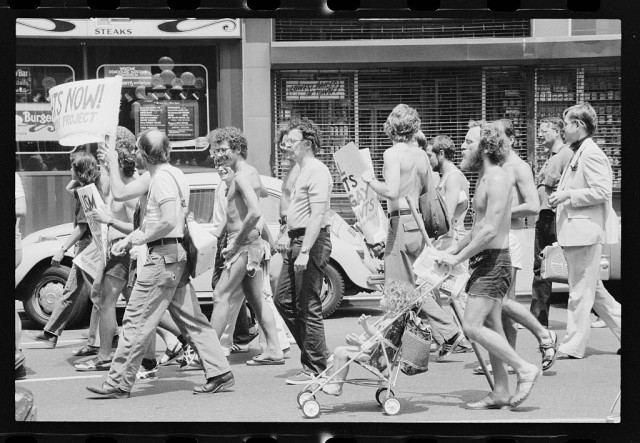On June 28, 1970, on the one year anniversary of the Stonewall Uprising, the first Pride marches were held in New York, Los Angeles and Chicago. Thousands of LGBT+ people gathered to commemorate Stonewall and demonstrate for equal rights. The events of Stonewall and the liberation movements that followed were a direct result of prior decades of LGBT+ activism and organizing. In particular, Pride traditions were adapted from the "Reminder Day Pickets" held annually (1965-1969) on July 4 at Independence Hall in Philadelphia, Pennsylvania.
The Reminder Day Pickets
The Annual Reminder Day Pickets were organized by the Eastern Regional Conference of Homophile Organizations (E.R.C.H.O). E.R.C.H.O. (initially called E.C.H.O.) was formed in 1962 as an organization of east coast homophile groups which included the New York Chapter of the Daughters of Bilitis, the Janus Society in Philadelphia, and the Mattachine Society of Washington and New York, and would grow to include others.

Gay rights demonstration at the Democratic National Convention, New York City
How Activists Planned the First Pride
After the Stonewall Uprising (June 1969), the organizers of the Annual Reminder Day Picket (Eastern Regional Conference of Homophile Organizations) suggested that they shift focus from planning the Reminder Day Picket to organizing an annual demonstration in commemoration of Stonewall.
At the November 1969 E.R.C.H.O Conference, the 13 voting organizations present adopted the following resolution:
"We propose that a demonstration be held annually on the last Saturday in June in New York City to commemorate the 1969 spontaneous demonstrations on Christopher Street and this demonstration be called CHRISTOPHER STREET LIBERATION DAY." The Stonewall Inn is located on Christopher Street, and was the origin point for the Uprising.
From the outset, organizers envisioned it as a national celebration, "We also propose that we contact Homophile organizations throughout the country and suggest that they hold parallel demonstrations on that day. We propose a nationwide show of support."
To get planning underway, they formed the Christopher Street Liberation Day Umbrella Committee. The committee defined it’s aim of holding a massive march at the culmination of a Gay Pride Week (June 22-28).
The first Christopher Street Liberation Day was a resounding success, the thousands of attendees surpassing organizers expectations. New York, Los Angeles and Chicago quickly began planning for 1971, and soon other cities, states, and countries would begin to establish their own annual Pride traditions.